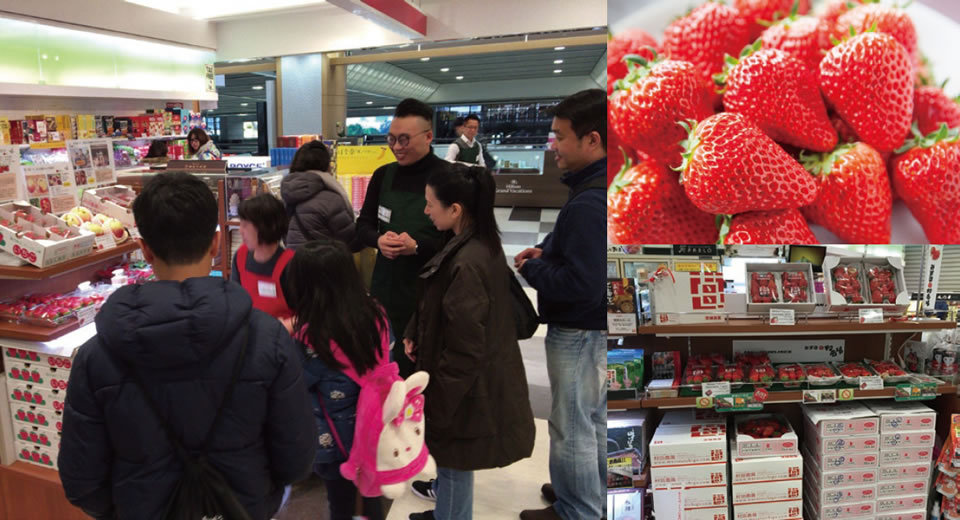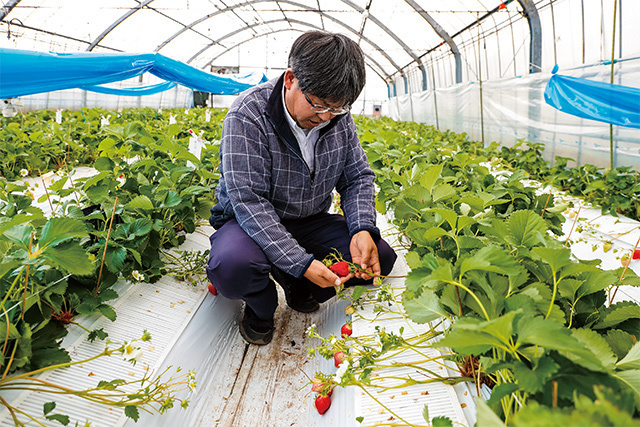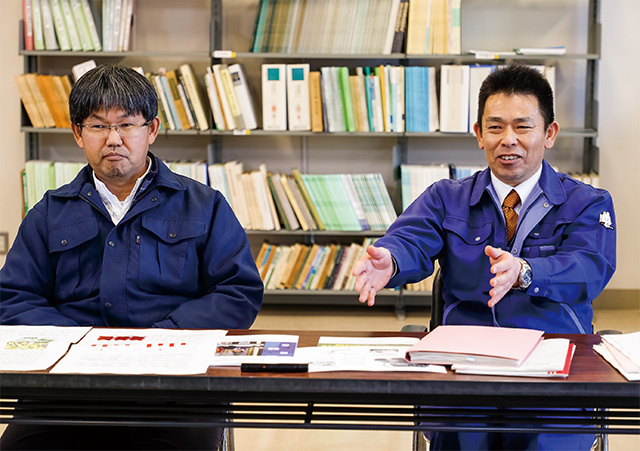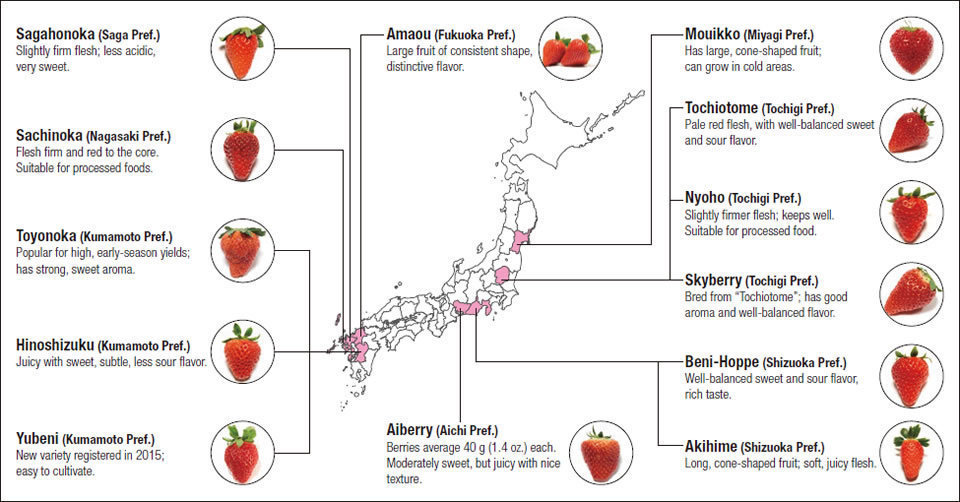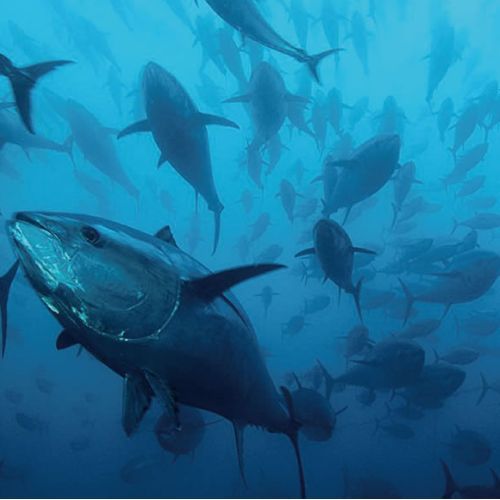With 159,000 tons produced annually and 148 varieties registered, strawberries are one of Japan’s leading fruits. And although they may be expensive, strawberry-lovers abroad hold Japanese strawberries in high regard for their outstanding flavor. Exports of Japanese strawberries, primarily to markets in Asia such as Hong Kong, have reached 526 tons (valued at JPY 1.15 billion (USD 10.65 million)) annually, and the volume is increasing. Greenhouse cultivation, one factor in this growth, allows producers to set the delivery time so that delicious berries can be enjoyed even in December, and not only in the April–May strawberry season.
Greenhouse at the Kumamoto Prefectural Agricultural Research Center, where work on the cultivation method of “Yubeni” strawberries continues. Conditions are changed little by little in the effort to produce a harvest of flavorful berries.
Strawberries gained popularity among Japanese households after greenhouse cultivation became possible in the 1960s. However, until the late 1990s, few varieties existed and two main ones, “Nyoho” and “Toyonoka” strawberries, dominated the market. Due to their rather sour taste, people usually ate these berries with milk and sugar or condensed milk. This changed after the Tochigi prefectural government initiated the breeding of its namesake “Tochiotome” strawberry. Other prefectures soon began competing to come up with their own local varieties, with the result being the sweet, juicy strawberry brands that are produced around Japan today.
Kazuhiro Tajiri of the Kumamoto Prefectural Agricultural Research Center describes one of the challenges in developing a new brand. “Flavorful strawberries, measured in the pointed tip, have a balance of a 14–15 degree sugar content (brix) and 0.6–0.7% acidity. However, a combination of factors including firmness of the berry determines flavor, so mechanically determined data alone does not tell the whole story. In developing new varieties, we have to eat and evaluate thousands of strawberries one by one. This continuous tasting irritates the stomach, so we must take stomach medicine as we work.”
Kazuhiro Tajiri (left) and Tatsumi Koba (right) at the Kumamoto Prefectural Agricultural Research Center distribute cultivation method manuals to farmers that have purchased seedlings.
Strawberry breeders face other challenges in their quest to develop delicious, marketable berries. A breed may receive a positive evaluation at the research center, but prove vulnerable to unexpected diseases in cultivation trials by farmers. Tatsumi Koba of the Kumamoto Prefectural Agricultural Research Center tells of the case of “Hinoshizuku,” a strawberry developed in 2003. “Although it received a very positive response for its flavor, its weakness to disease made it difficult to grow and control the delivery timing. To develop one breed takes about 10 years, and working to address these issues, we came out with the ‘Yubeni’ strawberry in 2015. Work to improve this breed still continues.”
Breed improvement is not the only goal in the development of strawberries; simply growing a breed may lead to an inconsistent quality of flavor. The cultivation method must also be researched for each breed to reach its full potential. Details like exposure to sunlight, proper humidity and temperature, and how many fruits each branch should bear must be taken into consideration. Only breeds producing strawberries that meet exacting standards for flavor can be marketed in Japan and overseas.
Have you tried Japanese strawberries? Please do! One taste will change your image of what a strawberry can be.


























